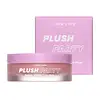What's inside
What's inside
 Key Ingredients
Key Ingredients

 Benefits
Benefits

 Concerns
Concerns

 Ingredients Side-by-side
Ingredients Side-by-side

Water
Skin Conditioning3-O-Ethyl Ascorbic Acid
Skin ConditioningDipropylene Glycol
HumectantButylene Glycol
HumectantEthoxydiglycol
Humectant1,2-Hexanediol
Skin ConditioningNiacinamide
SmoothingPanthenol
Skin ConditioningTocopherol
AntioxidantCitrus Paradisi Fruit Extract
Skin ConditioningC12-14 Pareth-12
EmulsifyingPentylene Glycol
Skin ConditioningSodium Polyacryloyldimethyl Taurate
Emulsion StabilisingXanthan Gum
EmulsifyingCarbomer
Emulsion StabilisingTromethamine
BufferingEthylhexylglycerin
Skin ConditioningAdenosine
Skin ConditioningGlycerin
HumectantDipotassium Glycyrrhizate
HumectantCyanocobalamin
Skin ConditioningPolyglyceryl-10 Oleate
Skin ConditioningSodium Phytate
Hydrogenated Lecithin
EmulsifyingParfum
MaskingWater, 3-O-Ethyl Ascorbic Acid, Dipropylene Glycol, Butylene Glycol, Ethoxydiglycol, 1,2-Hexanediol, Niacinamide, Panthenol, Tocopherol, Citrus Paradisi Fruit Extract, C12-14 Pareth-12, Pentylene Glycol, Sodium Polyacryloyldimethyl Taurate, Xanthan Gum, Carbomer, Tromethamine, Ethylhexylglycerin, Adenosine, Glycerin, Dipotassium Glycyrrhizate, Cyanocobalamin, Polyglyceryl-10 Oleate, Sodium Phytate, Hydrogenated Lecithin, Parfum
Polyglyceryl-2 Triisostearate
EmulsifyingHydrogenated Polyisobutene
EmollientDiisostearyl Malate
EmollientHydrogenated Poly(C6-14 Olefin)
EmollientPhytosteryl/Isostearyl/Cetyl/Stearyl/Behenyl Dimer Dilinoleate
Skin ConditioningEuphorbia Cerifera Cera
AstringentTocopheryl Acetate
AntioxidantPolyethylene
AbrasiveButyrospermum Parkii Butter
Skin ConditioningSilica Dimethyl Silylate
EmollientOzokerite
Emulsion StabilisingCopernicia Cerifera Wax
Microcrystalline Wax
Emulsion StabilisingEthylene/Propylene/Styrene Copolymer
Ascorbyl Glucoside
AntioxidantHibiscus Sabdariffa Flower Extract
Skin ConditioningTheobroma Cacao Seed Butter
EmollientSorbitan Sesquioleate
EmulsifyingCI 77891
Cosmetic ColorantPrunus Amygdalus Dulcis Oil
Skin ConditioningCamellia Sinensis Seed Oil
HumectantCamellia Japonica Seed Oil
EmollientArgania Spinosa Kernel Oil
EmollientOlea Europaea Fruit Oil
MaskingMacadamia Integrifolia Seed Oil
Skin ConditioningHelianthus Annuus Seed Oil
EmollientSimmondsia Chinensis Seed Oil
EmollientOrbignya Oleifera Seed Oil
EmollientBenzotriazolyl Dodecyl P-Cresol
UV AbsorberCaprylic/Capric Triglyceride
MaskingEthylhexyl Palmitate
EmollientButylene/Ethylene/Styrene Copolymer
Pentaerythrityl Tetra-Di-T-Butyl Hydroxyhydrocinnamate
AntioxidantDehydroacetic Acid
PreservativeDimethicone
EmollientMonascus Extract
Skin ConditioningTribehenin
EmollientLactic Acid
BufferingCitric Acid
BufferingPyrus Malus Seed Oil
EmollientSorbitan Isostearate
EmulsifyingCI 77492
Cosmetic ColorantMethyl Nicotinate
SoothingWater
Skin ConditioningGlycine Soja Oil
EmollientButylene Glycol
HumectantPalmitoyl Tripeptide-1
Skin ConditioningPyrus Malus Fruit Extract
Skin ConditioningZingiber Officinale Root Oil
MaskingCapsicum Frutescens Fruit Extract
Skin ConditioningBHT
Antioxidant1,2-Hexanediol
Skin ConditioningCI 15850
Cosmetic ColorantCI 45410
Cosmetic ColorantCI 42090
Cosmetic ColorantParfum
MaskingPolyglyceryl-2 Triisostearate, Hydrogenated Polyisobutene, Diisostearyl Malate, Hydrogenated Poly(C6-14 Olefin), Phytosteryl/Isostearyl/Cetyl/Stearyl/Behenyl Dimer Dilinoleate, Euphorbia Cerifera Cera, Tocopheryl Acetate, Polyethylene, Butyrospermum Parkii Butter, Silica Dimethyl Silylate, Ozokerite, Copernicia Cerifera Wax, Microcrystalline Wax, Ethylene/Propylene/Styrene Copolymer, Ascorbyl Glucoside, Hibiscus Sabdariffa Flower Extract, Theobroma Cacao Seed Butter, Sorbitan Sesquioleate, CI 77891, Prunus Amygdalus Dulcis Oil, Camellia Sinensis Seed Oil, Camellia Japonica Seed Oil, Argania Spinosa Kernel Oil, Olea Europaea Fruit Oil, Macadamia Integrifolia Seed Oil, Helianthus Annuus Seed Oil, Simmondsia Chinensis Seed Oil, Orbignya Oleifera Seed Oil, Benzotriazolyl Dodecyl P-Cresol, Caprylic/Capric Triglyceride, Ethylhexyl Palmitate, Butylene/Ethylene/Styrene Copolymer, Pentaerythrityl Tetra-Di-T-Butyl Hydroxyhydrocinnamate, Dehydroacetic Acid, Dimethicone, Monascus Extract, Tribehenin, Lactic Acid, Citric Acid, Pyrus Malus Seed Oil, Sorbitan Isostearate, CI 77492, Methyl Nicotinate, Water, Glycine Soja Oil, Butylene Glycol, Palmitoyl Tripeptide-1, Pyrus Malus Fruit Extract, Zingiber Officinale Root Oil, Capsicum Frutescens Fruit Extract, BHT, 1,2-Hexanediol, CI 15850, CI 45410, CI 42090, Parfum
Ingredients Explained
These ingredients are found in both products.
Ingredients higher up in an ingredient list are typically present in a larger amount.
1,2-Hexanediol is a synthetic liquid and another multi-functional powerhouse.
It is a:
- Humectant, drawing moisture into the skin
- Emollient, helping to soften skin
- Solvent, dispersing and stabilizing formulas
- Preservative booster, enhancing the antimicrobial activity of other preservatives
Butylene Glycol (or BG) is used within cosmetic products for a few different reasons:
Overall, Butylene Glycol is a safe and well-rounded ingredient that works well with other ingredients.
Though this ingredient works well with most skin types, some people with sensitive skin may experience a reaction such as allergic rashes, closed comedones, or itchiness.
Learn more about Butylene GlycolParfum is a catch-all term for an ingredient or more that is used to give a scent to products.
Also called "fragrance", this ingredient can be a blend of hundreds of chemicals or plant oils. This means every product with "fragrance" or "parfum" in the ingredients list is a different mixture.
For instance, Habanolide is a proprietary trade name for a specific aroma chemical. When used as a fragrance ingredient in cosmetics, most aroma chemicals fall under the broad labeling category of “FRAGRANCE” or “PARFUM” according to EU and US regulations.
The term 'parfum' or 'fragrance' is not regulated in many countries. In many cases, it is up to the brand to define this term.
For instance, many brands choose to label themselves as "fragrance-free" because they are not using synthetic fragrances. However, their products may still contain ingredients such as essential oils that are considered a fragrance by INCI standards.
One example is Calendula flower extract. Calendula is an essential oil that still imparts a scent or 'fragrance'.
Depending on the blend, the ingredients in the mixture can cause allergies and sensitivities on the skin. Some ingredients that are known EU allergens include linalool and citronellol.
Parfum can also be used to mask or cover an unpleasant scent.
The bottom line is: not all fragrances/parfum/ingredients are created equally. If you are worried about fragrances, we recommend taking a closer look at an ingredient. And of course, we always recommend speaking with a professional.
Learn more about ParfumWater. It's the most common cosmetic ingredient of all. You'll usually see it at the top of ingredient lists, meaning that it makes up the largest part of the product.
So why is it so popular? Water most often acts as a solvent - this means that it helps dissolve other ingredients into the formulation.
You'll also recognize water as that liquid we all need to stay alive. If you see this, drink a glass of water. Stay hydrated!
Learn more about Water